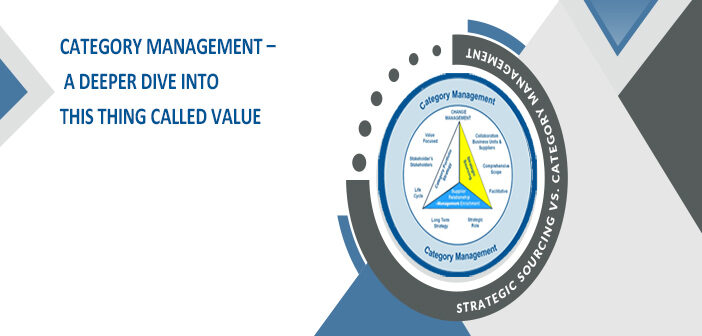It’s been a buzzword that’s been bandied about for a while and of course it’s a major focus of every Category Management model out there. We’ve been talking about it for a looooong time ourselves so we’re as guilty as everyone else. That doesn’t mean that it doesn’t deserve more attention and in fact it still remains a fairly elusive and nebulous concept….mostly because we have failed to define it or how to measure it.
Let me start by reminding us of a few salient points about Value from Professor Sawhney:
- It’s ALWAYS customer defined
- It’s OPAQUE (non-quantifiable)
- It’s Multi-Dimensional (Functional, Economic, Psychological)
- It’s Contextual (Defined by how it’s used)
- It’s Relative
These unique points are also what make Value hard to define and measure.
Here is an example from the Public Sector developed by Booz Allen. This was a Value Measurement Methodology.
DIRECT USER (CUSTOMER) VALUE
Benefits directly realized by users or multiple user groups. Users or customers will vary based on the type of initiative being assessed. Users may include, but are not limited to, government employees, other government organizations, and citizens.
SOCIAL (NON-DIRECT USER/PUBLIC) VALUE Benefits not related to direct users (e.g., society as a whole)
GOVERNMENT OPERATIONAL / FOUNDATIONAL VALUE
Order of magnitude improvements realized in current government operations and processes and in laying the groundwork for future initiatives.
GOVERNMENT FINANCIAL VALUE
Financial benefit (e.g., cost savings, cost avoidance) realized by the government, including financial benefits received by the managing or sponsor agency as well as other federal agencies.
STRATEGIC / POLITICAL VALUE
Benefits that move an organization closer to achieving its strategic goals, the priorities established by the Executive Office of the President, and congressional mandates.
You will notice that this also suffers from the measurable dilemma even though it’s called a measurement methodology. The only traditionally measurable element is the financial value while the other four elements are as critical if not more critical in terms of Value?
Because Value is always customer (Stakeholder) defined, it stands to reason that the more value you can identify for as many stakeholders as possible will lead to your organization delivering maximum Value? Here is a simplified way to look at it:
Current Value (what you are delivering today)
+ Current Stakeholder / New Value
+ New Stakeholder / Old Value
+ New Stakeholder / New Value
What that means is that you need to focus on knowing what is of Value to your Stakeholders and you need to identify new Stakeholders for your services and that is not as easy as you may think. It requires a disciplined approach and a process to uncover new Value and new Stakeholders and we find most organizations lacking in this critical competency.
Let me share an actual client case study of how this can be applied. We were helping them develop a business case for a CRM initiative and then we helped them select and source the right solution. Here was the traditional way of developing the justification:
Current Stakeholders:
- CIO:
- Project on time
- Project on budget
- CMO:
- Better understanding of most valuable customers
- More targeted marketing
- CSO:
- Generate sales
- Track productivity of sales force
And by applying our structured process and methodology, we were able to add the following:
Expanded Stakeholders:
- CPO:
- Customer analysis leading to id of obsolete inventory
- Forecasting supply
- CFO:
-
- Track customer profitability
- Track ROI on IT investment
-
- HR:
- Track sales productivity for compensation, evaluation of staff
- Customer Service:
- Track customer satisfaction / dissatisfaction
As you can tell, we increased the Value proposition exponentially and increased the pool of sponsors for the initiative. If you are on the journey to Category Management, the concept of Value needs to be fully understood and embraced by your entire organization?


